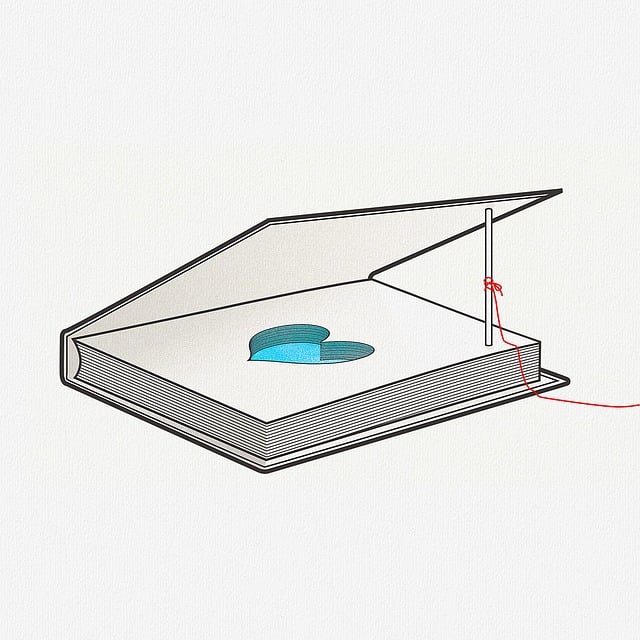Are you considering veneers in Maryland? Dive into this informative article to discover all the essential pricing details you need to know.
1. An Overview of Veneers: What are They and Why Consider Them for Your Smile Transformation?
Veneers are a popular cosmetic dental treatment that can transform your smile and improve the appearance of your teeth. They are thin, custom-made shells made of porcelain or composite resin that are bonded to the front surface of your teeth. Veneers are designed to look and feel like natural teeth, making them virtually indistinguishable.
There are several reasons why veneers are a great option for your smile transformation:
- Enhanced appearance: Veneers can address a variety of dental issues, including stains, discoloration, chips, cracks, and misalignments. They can give you a bright, white, and perfectly aligned smile that you’ve always desired.
- Minimally invasive: Compared to other cosmetic dental treatments, veneers are relatively non-invasive. They require minimal tooth reshaping, so the integrity of your natural teeth is preserved.
- Durable and long-lasting: Veneers are remarkably durable and can last for many years with proper care. They are resistant to staining and are designed to withstand normal wear and tear.
- Quick and convenient: The process of getting veneers is typically completed in just a few dental visits. You can achieve a stunning smile transformation without the need for extended treatment times.
Veneers provide a versatile and effective solution for those who want to improve the appearance of their smile. They offer a range of benefits, including enhanced aesthetics, durability, and convenience. If you’re considering a smile transformation, veneers might be the perfect solution for you to achieve the beautiful smile of your dreams.
2. Factors Influencing Veneer Costs: A Breakdown of the Many Variables
There are numerous factors that contribute to the overall cost of veneers. Understanding these variables can help you make an informed decision when considering veneer options. Here is a breakdown of the many factors that influence veneer costs:
- Material: The type of material used for veneers greatly affects the price. Porcelain veneers tend to be more expensive than composite veneers due to their superior durability and natural appearance.
- Number of veneers: The number of veneers needed to achieve the desired result is another significant cost factor. Patients requiring veneers on multiple teeth should anticipate a higher investment compared to those needing veneers on only a few teeth.
- Complexity of the case: Cases that require additional dental work, such as gum contouring or tooth realignment, will generally involve higher costs. Complex cases often demand more time and expertise from the dentist, which is reflected in the overall price.
- Location: The geographical location of the dental clinic can also impact veneer costs. Areas with higher living expenses and overhead costs tend to have higher dental fees.
Other influencing factors include the reputation and experience of the dentist, any additional treatments needed before veneers can be placed, and the desired characteristics of the veneers (such as shade, thickness, and translucency). By considering these variables, you can better understand the factors that contribute to the cost of veneers and make an informed decision about the best option for your dental needs.
3. Understanding the Average Cost: Pricing of Veneers in Maryland
When considering veneers in Maryland, it is important to understand the average cost associated with this cosmetic dental procedure. While prices may vary depending on several factors, such as the dental clinic, the specific type of veneer, and the extent of the dental work required, having a general understanding of the pricing range can be helpful in planning your budget.
On average, the cost of veneers in Maryland can range from $800 to $2,500 per tooth. This wide price range is due to various factors that can influence the final cost. Some of these factors include:
- The material used for the veneer (e.g., porcelain, composite).
- The complexity of the dental case and the amount of preparation required.
- The experience and expertise of the dentist performing the procedure.
It is essential to note that the overall cost may also include additional fees such as consultations, x-rays, and follow-up appointments. Understanding these variables and discussing them with your dentist during your initial consultation will provide you with a clearer picture of the total cost associated with getting veneers in Maryland.
4. Premium vs. Budget Veneers: Exploring the Cost Differences and Quality Factors
When it comes to veneers, there are two main options to consider: premium and budget veneers. Understanding the differences in cost and quality factors can help you make an informed decision that suits your needs and budget. Let’s take a closer look:
Cost Differences:
- Premium Veneers: Premium veneers generally come with a higher price tag due to their superior materials and craftsmanship. These veneers are often made from high-quality porcelain or ceramic, offering exceptional durability and a natural-looking appearance. In addition, the fabrication process involves meticulous customization to ensure a perfect fit, contributing to the higher cost.
- Budget Veneers: On the other hand, budget veneers are more economical options that offer a more affordable solution. These veneers are usually made from composite resin material, which is less expensive compared to porcelain or ceramic. While budget veneers may not provide the same level of durability or natural aesthetics as their premium counterparts, they can still enhance the appearance of your teeth at a lower price point.
Quality Factors:
- Premium Veneers: Due to their higher cost, premium veneers often boast superior quality. Made from premium materials, these veneers have a longer lifespan and are less prone to chipping or staining. Additionally, their natural appearance is more convincing, with translucent properties that mimic the characteristics of real teeth, resulting in a beautiful and seamless smile.
- Budget Veneers: While budget veneers may not match the quality of premium options, they still offer decent results for individuals on a tighter budget. These veneers can improve the overall appearance of your teeth, but they may be more susceptible to wear and require replacement sooner than their premium counterparts. However, advancements in materials and technology have made budget veneers more durable and aesthetic in recent years, making them a viable choice for those seeking affordable cosmetic enhancements.
5. The Role of Material Selection: Examining the Impact on Veneers’ Price
When it comes to veneers, selecting the right material can have a significant impact on the overall cost. With various options available, it is essential to understand how material selection influences the price of veneers.
One crucial factor to consider is the type of material used for the veneer. Different materials offer varying degrees of durability, aesthetics, and longevity. Here are some common materials used for veneers:
- Porcelain: Porcelain veneers are highly popular due to their natural appearance and stain-resistant properties. They are also exceptionally durable and can last up to 15 years with proper care.
- Composite Resin: Composite resin veneers are more affordable compared to porcelain and can be crafted directly on the teeth. While they provide good aesthetics, they may not last as long as porcelain veneers and may require more frequent touch-ups or replacements.
- Lumineers: Lumineers are a particular brand of veneers made from ultra-thin porcelain. They can provide excellent aesthetics but may be more expensive than traditional porcelain veneers.
The choice of material depends on various factors, including personal preference, budget, and individual dental needs. It is crucial to consult with a qualified dentist who can guide you towards the material that best suits your specific requirements.
6. Dental Consultation Fees: Unveiling the Steps Involved in the Veneer Process
Veneers are a popular dental treatment for individuals looking to enhance the appearance of their smile. If you are considering getting veneers, it is important to understand the steps involved in the process, as well as the associated dental consultation fees. By familiarizing yourself with these details, you can make an informed decision and be prepared for what to expect during your consultation.
Here are the steps involved in the veneer process:
- Consultation: The first step is to schedule a consultation with a qualified dentist. During this appointment, you will discuss your goals and expectations for veneers, as well as have a thorough examination of your teeth to determine if you are a suitable candidate for the treatment. X-rays or impressions may also be taken.
- Treatment planning: Once it is confirmed that veneers are suitable for you, the dentist will create a treatment plan tailored to your specific needs. This will involve discussing the material options for the veneers, such as porcelain or composite, and determining the desired shape, color, and size of the veneers to achieve your desired results.
7. Additional Expenses to Consider: Etching, Bonding, and Maintenance Costs
Etching, bonding, and maintenance costs are additional expenses that you should consider when planning for a project. These costs may vary depending on the complexity and size of the project, but they are important to keep in mind to ensure the overall success and longevity of your installation.
Etching is a process that involves using chemicals to create patterns or designs on a surface. This technique can add a unique and decorative element to your project, but it typically comes with its own set of costs. The price of etching can vary depending on factors such as the size and intricacy of the design, as well as the type of material being etched. Be sure to budget for this expense if you are looking to incorporate etching into your project.
Bonding is another expense to consider, especially if you are working with materials that require adhesive for proper installation. Bonding agents, such as adhesives and resins, can be costly, and the amount needed will depend on the size and complexity of the project. Proper bonding is crucial for ensuring durability and stability, so it’s important not to overlook this cost.
In addition to etching and bonding, maintenance costs should also be factored into your budget. Over time, natural wear and tear, weather conditions, and other factors can affect the appearance and functionality of your project. Regular maintenance, such as cleaning, re-coating, or repairing damaged areas, is essential to prolonging the lifespan of your installation. Remember to allocate funds for these ongoing costs to keep your project looking its best for years to come.
8. Insurance Coverage for Veneers: Determining if Your Plan Offers Financial Assistance
When considering veneers as a dental treatment, it’s important to also consider the financial aspect of the procedure. Understanding your insurance coverage can help you determine if you are eligible for financial assistance. Here are some key points to keep in mind:
- Check your insurance policy: Start by reviewing your dental insurance policy to see if veneers are covered. Some plans may provide partial or full coverage for cosmetic dentistry procedures like veneers, while others may not.
- Verify pre-authorization requirements: Certain insurance plans require pre-authorization before undergoing veneer treatment. Contact your insurance provider to determine if this is necessary, as failing to do so may result in denied coverage.
- Consider waiting periods: Some insurance plans have waiting periods before they cover dental procedures like veneers. Be aware of these waiting periods and factor them into your decision-making process.
It’s crucial to communicate directly with your insurance provider to gather accurate information about veneer coverage. While some insurance plans may offer financial assistance, it’s essential to understand the specifics of your plan before making any treatment decisions. Remember, every insurance policy is unique, so staying informed will help you make the best choice for your dental and financial needs.
9. Financing Options and Payment Plans: Avoiding Costly Upfront Expenses
When it comes to financing options for your expenses, it’s important to explore alternatives that can help you avoid costly upfront payments. We understand that such expenses can be a substantial burden for individuals and businesses alike. To ease the financial pressure, there are several payment plans and financing options available to suit your needs.
1. Installment Plans: Some service providers offer installment plans that allow you to pay for your expenses in smaller, more manageable monthly installments. This option can be particularly beneficial if you have a tight budget or prefer spreading out your payments over a longer period of time. By breaking down the cost into smaller payments, you can avoid a large upfront expense while still receiving the desired services.
2. Financing Programs: Many companies provide financing programs that enable you to finance your expenses through loans or credit. These programs often come with flexible payment terms, competitive interest rates, and straightforward application processes. Financing programs can help you cover your expenses without depleting your savings or disrupting your cash flow. They provide a convenient solution for those who need to pay for services immediately but prefer to pay over time.
10. Making an Informed Decision: Finding the Best Balance Between Quality and Cost
When it comes to making an informed decision, finding the best balance between quality and cost is crucial. Here are some key factors to consider:
- Research: Start by researching different options available in the market. Look for customer reviews and ratings to gauge the quality of the product or service.
- Compare prices: Don’t settle for the first option you come across. Take the time to compare prices from different suppliers or providers. Keep in mind that the cheapest option may not always offer the best quality, so strike a balance.
- Assess your needs: Identify your specific needs and priorities. Determine what features or aspects are most important to you. This will help you narrow down your choices and focus on finding the best option for your requirements.
Additionally, it’s important to consider the long-term value of a product or service. While something may initially seem costly, it could save you money in the long run by being more durable or efficient. On the other hand, investing too much in a product with features you won’t fully utilize can be wasteful. Finding the sweet spot between quality and cost ensures a satisfying purchase that meets your needs and is worth your hard-earned money.
In conclusion, the cost of veneers in Maryland can vary, ranging from $800 to $2,500 per tooth. Factors like material, location, and additional procedures affect pricing. However, investing in veneers can provide you with a beautiful smile and improved confidence. Consider consulting a reputable dentist for a personalized quote and advice on achieving your desired results.






